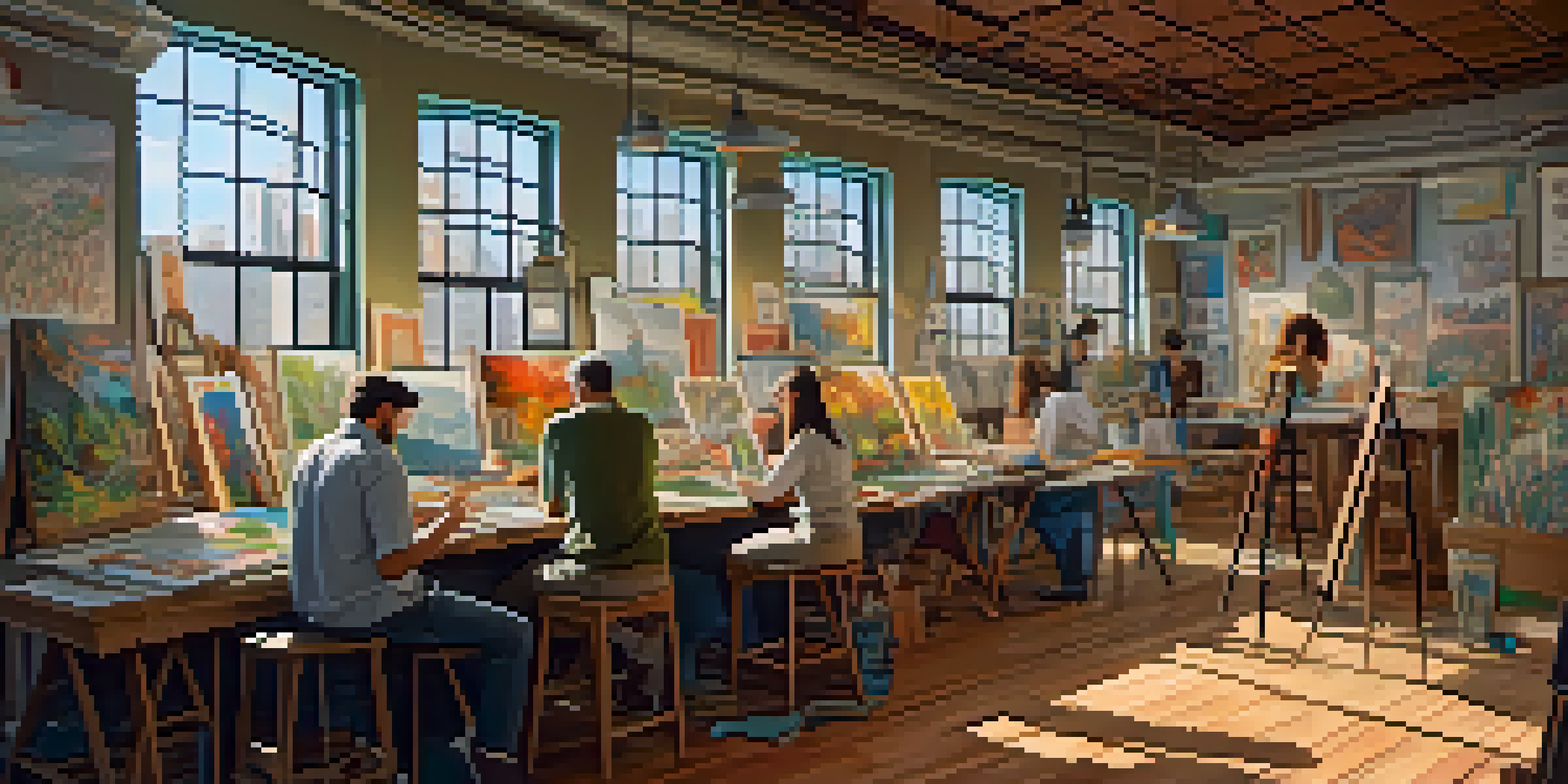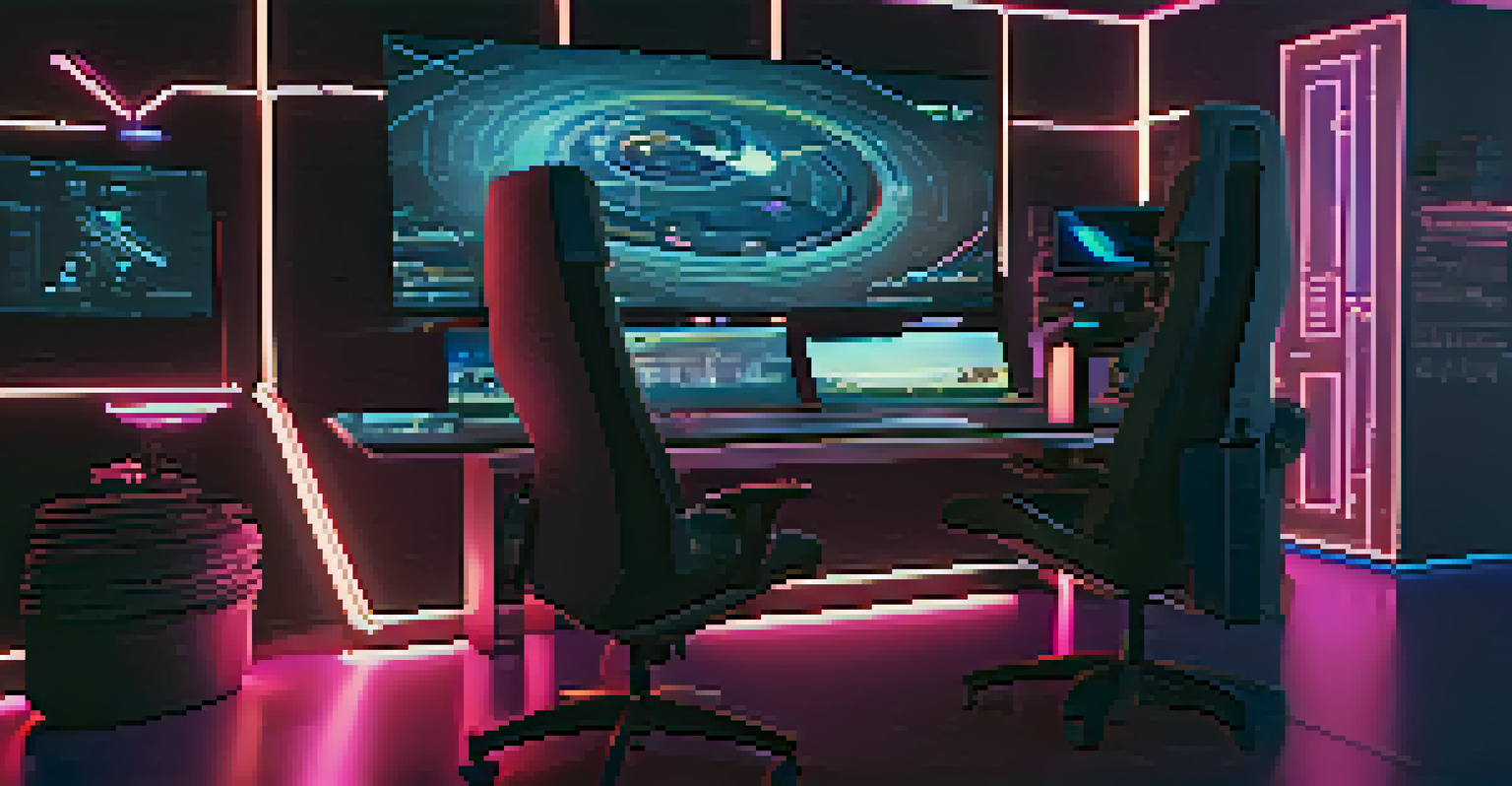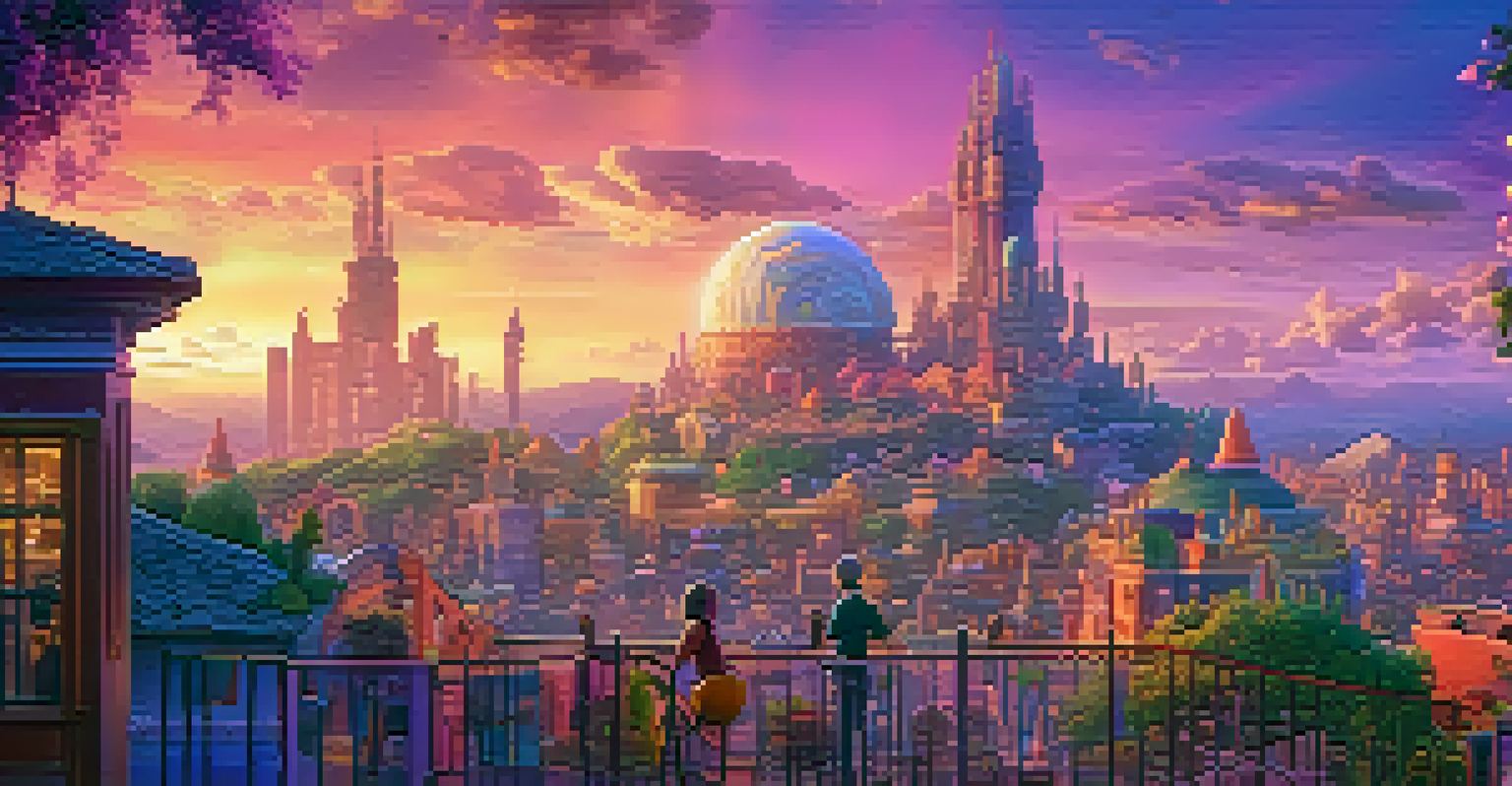The Impact of CGI on Animation: A Revolutionary Change

The Evolution of Animation: From Hand-Drawn to CGI
Animation has come a long way since its early days, starting with hand-drawn frames. This traditional method, while beautiful, was time-consuming and labor-intensive. With the introduction of Computer-Generated Imagery (CGI), the animation landscape began to shift dramatically.
Animation is about creating the illusion of life. How you do that is up to you.
CGI allowed animators to create complex scenes and characters with precision and speed. For example, films like 'Toy Story' pioneered this technology, showcasing fully 3D environments and lifelike characters. This evolution not only enhanced visual quality but also opened the door to more intricate storytelling.
By blending artistry and technology, CGI has revolutionized animation, making it accessible to a broader audience. This transformation has led to the rise of animated features that resonate deeply with viewers, proving that the heart of animation remains in its ability to tell compelling stories.
The Technical Advancements that Made CGI Possible
The leap to CGI was powered by significant technological advancements, such as faster computers and more sophisticated software. Programs like Maya and Blender have become essential tools for animators, allowing for detailed modeling and animation. These innovations have streamlined the creative process, enabling animators to focus on storytelling.

In addition, the development of rendering techniques has greatly improved the quality of animated visuals. Techniques like ray tracing simulate realistic lighting and shadows, adding depth and realism to CGI animations. This attention to detail helps create immersive worlds that captivate audiences.
CGI Revolutionizes Animation
The shift from hand-drawn to CGI has transformed animation, enhancing visual quality and storytelling potential.
Moreover, advancements in motion capture technology have allowed animators to achieve lifelike movements. By capturing real actors' performances, studios can create animated characters that mimic human expressions and movements, bridging the gap between reality and animation.
CGI’s Role in Expanding Storytelling Possibilities
One of the most exciting impacts of CGI on animation is the expansion of storytelling possibilities. With the ability to create fantastical worlds and characters, animators can explore themes and narratives that were previously unattainable. This freedom allows for greater creativity and innovation in storytelling.
Technology is best when it brings people together.
For instance, movies like 'Avatar' and 'Spider-Man: Into the Spider-Verse' showcase how CGI can bring bold, imaginative concepts to life. These films utilize CGI not just for aesthetics but to enhance their narratives, engaging viewers on multiple levels. The result is a richer cinematic experience that resonates with audiences.
Additionally, CGI has enabled the blend of live-action and animation, allowing for unique storytelling styles. This hybrid approach creates opportunities for innovative narratives, where animated elements enhance and interact with real-world settings.
CGI and the Global Animation Landscape
CGI has also transformed the global animation landscape, making it easier for studios worldwide to produce high-quality animated content. With access to powerful software and online resources, animators from various countries can create captivating stories that reflect their unique cultures. This democratization of animation fosters diversity in storytelling.
In countries like Japan, CGI has revitalized traditional animation styles, merging them with cutting-edge technology. The result is a new wave of animated films that blend cultural heritage with contemporary storytelling techniques. This cross-cultural exchange enriches the animation industry as a whole.
Technological Advances Drive Innovation
Significant advancements in technology, including faster computers and motion capture, have streamlined the animation process.
Furthermore, international collaborations have become more common, leading to the creation of breathtaking animated features that appeal to global audiences. This interconnectedness ensures that diverse voices and stories are shared, enriching the animation landscape.
The Challenges of CGI in Animation
Despite its many advantages, the rise of CGI in animation comes with its own set of challenges. One major concern is the high cost of producing CGI content, which can be prohibitive for smaller studios. The need for advanced technology and skilled artists often means higher production budgets.
Moreover, the reliance on CGI can sometimes overshadow the importance of storytelling and character development. While stunning visuals are captivating, they can’t replace the emotional connection that well-crafted stories create. Striking a balance between technology and narrative is crucial for the success of animated films.
Finally, the rapid pace of technological change can make it difficult for animators to keep up. As new tools and techniques emerge, continuous learning and adaptation become essential. This pressure can lead to burnout among animators, highlighting the need for a supportive industry environment.
The Future of CGI in Animation
Looking ahead, the future of CGI in animation is bright and filled with potential. As technology continues to advance, we can expect even more immersive experiences and new storytelling techniques. Virtual reality (VR) and augmented reality (AR) are already beginning to influence animated content, creating interactive narratives.
Additionally, artificial intelligence (AI) is becoming a valuable tool in the animation process. AI can streamline tasks such as character rigging and background generation, allowing animators to focus on creative aspects. This integration of AI could revolutionize the way animated stories are crafted.
Challenges Amid CGI Growth
Despite its benefits, CGI poses challenges such as high production costs and the risk of overshadowing storytelling.
As CGI evolves, we may also see a resurgence of interest in traditional animation techniques. The combination of CGI with hand-drawn elements can create a unique aesthetic that appeals to audiences seeking nostalgia alongside modern visuals.
Conclusion: Embracing the CGI Revolution in Animation
In conclusion, the impact of CGI on animation is profound, transforming not just how animated films are made, but also how stories are told. The blend of artistry and technology has opened up new avenues for creativity, allowing for richer narratives and more engaging visuals. As we embrace this revolution, it’s essential to remember the heart of animation lies in storytelling.
While CGI has introduced challenges, such as cost and the risk of losing focus on narrative, it also offers immense potential for the animation industry. By prioritizing storytelling alongside technological advancements, animators can create unforgettable experiences that resonate with audiences.

Ultimately, the future of animation is a collaborative journey. By harnessing the power of CGI while honoring traditional methods, the animation industry can continue to innovate and inspire, captivating audiences for generations to come.